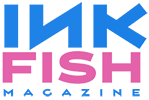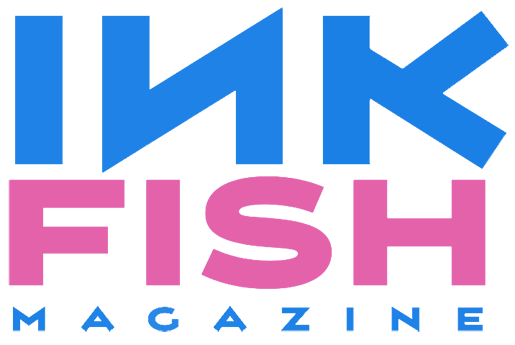Interview with Sue Lewington
Artist
Questions by Kate Horsley
Tell us a little about your work and where you live.
I work on the high moorlands, the seashores and all places between – trying to capture a sense of place and time in both the big views and the small details. Working in sketchbooks I make visual and written notes. Not everything can be painted, birdsong, a snatch of conversation, the passage of time through the landscape.
Sometimes I paint on the spot and sometimes the sketches are worked up in watercolour, acrylic, inks and charcoal back in my workshop. I produce sketchbooks for publication as well as handmade artists books for galleries and commissions. Teaching has become a large part of my life. There’s nothing to match the ideas and energy in a room of creative people hard at work.. and nothing to match that feeling of a long day in the workshop trying to achieve something close to the picture I have in my head.

How did you start making artists’ books?
I started making books over 20 years ago after meeting Rachel Hazell, a bookbinder. She came into my gallery on St Martin’s, Scilly, and we started chatting. Later in the year, she returned to run a bookbinding class for me and some friends. I got hooked from the very first book I made, and have carried on ever since.
My family and I moved to West Cornwall in the late 1970s, growing our own food and keeping goats. That was when I started teaching printmaking at Newlyn School of Art in Penzance, selling my etchings through a London agent. I started making a series of books about places in the West Country after meeting a publisher on St Martin’s. They were a return to the sketchbook habit I learnt at art school; a sideways look at well known places like Penzance and Newlyn. I made a centenary book for the Isles of Scilly Steamship Company and a book about the building of the new Cornwall Records Office: the second of those may sound boring, but I loved working in a huge building site, recording the old brewery buildings being incorporated into a beautiful new building, with lots of scaffolding and men in hard hats and yellow jackets!
Can you tell us a bit about your process?
Bookbinding ranges from traditional techniques to ‘anything goes’! The materials are very simple: a bone folder, bookbinding thread and needle, craft knife, paper, card, book cloth and good glue. I love to make artists’ books in part, because it gives me a chance to play with papers, shapes and stitches. Whatever book I make, it inevitably includes an interior world of paint, collage, and text. What’s produced becomes a portable and personal art work which takes on its own character. Every book takes on its own character during the making process.
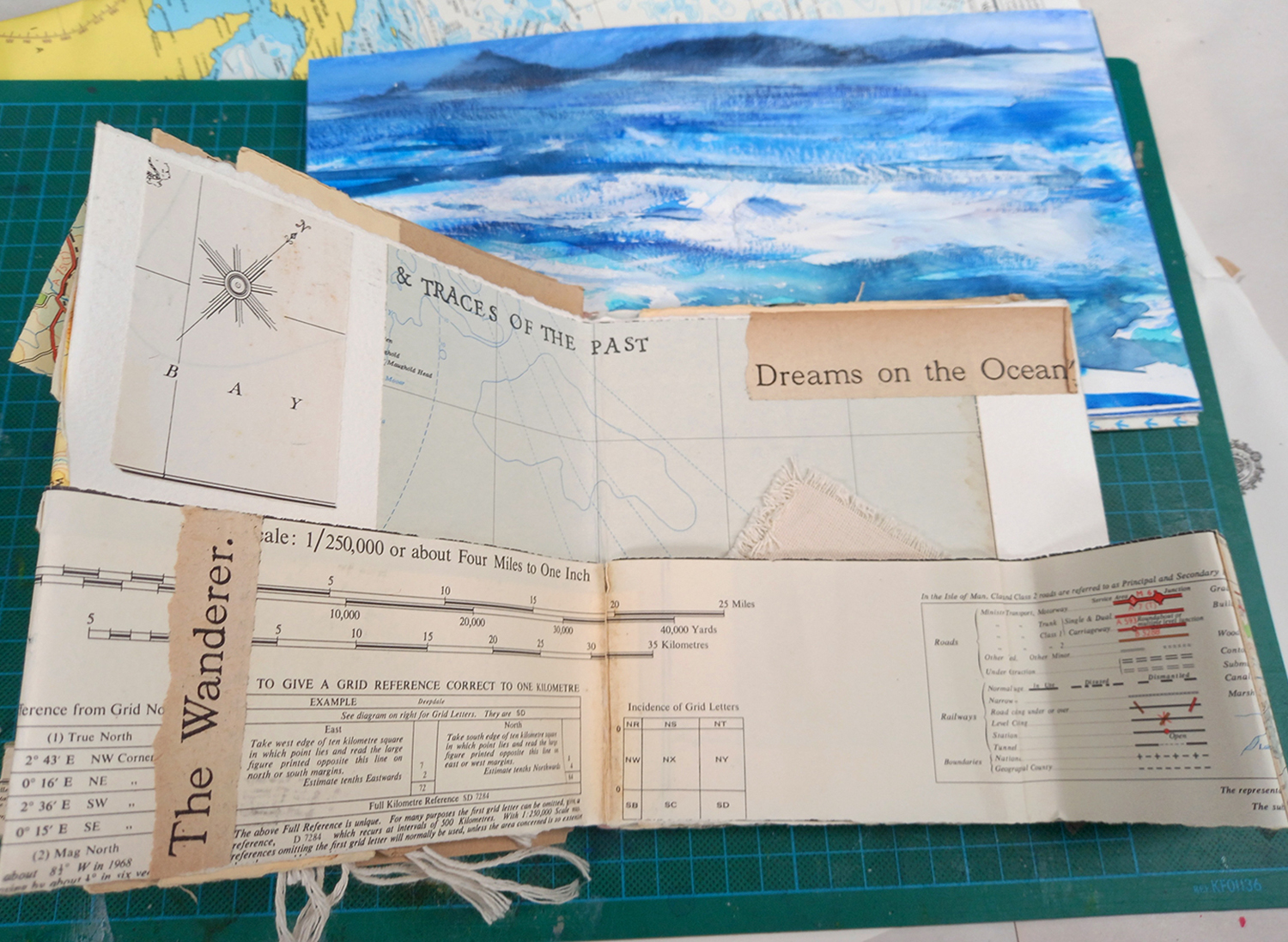
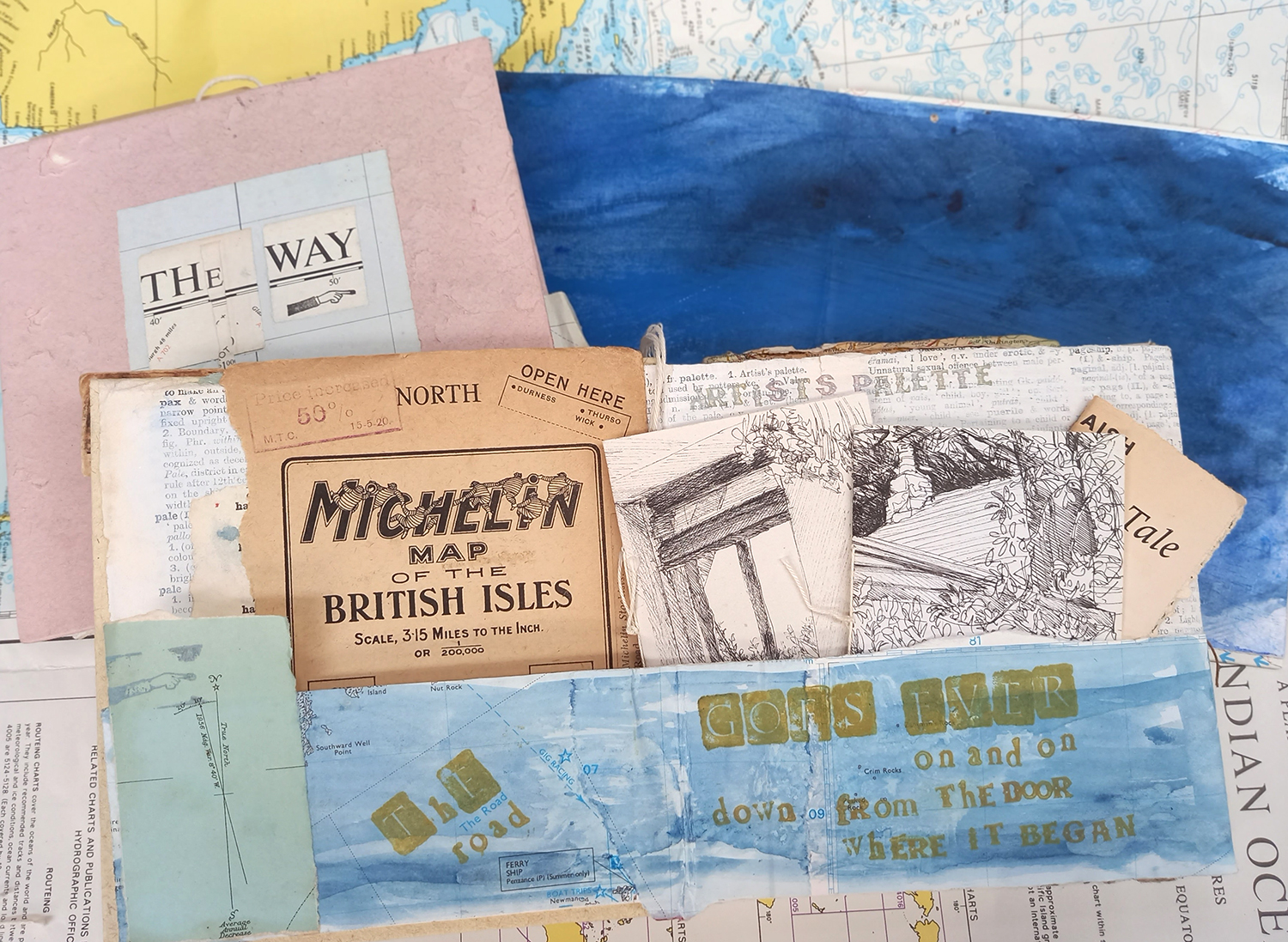
What inspires you in the everyday?
I’m inspired by the landscape and the natural world, the changing seasons; by words, ideas and storytelling.
What do you love about teaching workshops?
I love teaching workshops because making books is within the reach of anyone. The process is simple and the finished result convinces lots of people who thought they weren’t creative that they are. Bookmaking is a shared activity. Inspiration and ideas are passed around the room, which fills with energy and the hum of conversation. Age doesn’t matter and neither does artistic ability. There’s something so special in the atmosphere of a room of people with hands busy, ideas flowing and chatting and laughter going on. Through all that, beautiful artists books are being made by people who would never call themselves artists. Friendships are made, worries untangled, and problems solved.
What are you working on at the moment?
Lately, I’ve been working on some longer term projects including a large illustrated map and a book created with the Cornwall Heritage Trust as part of the outputs for a year’s residency. On my days off, I play with different book structures using mixed media – which is an arty word for tearing up failed painting and giving them a new life as artists’ books!
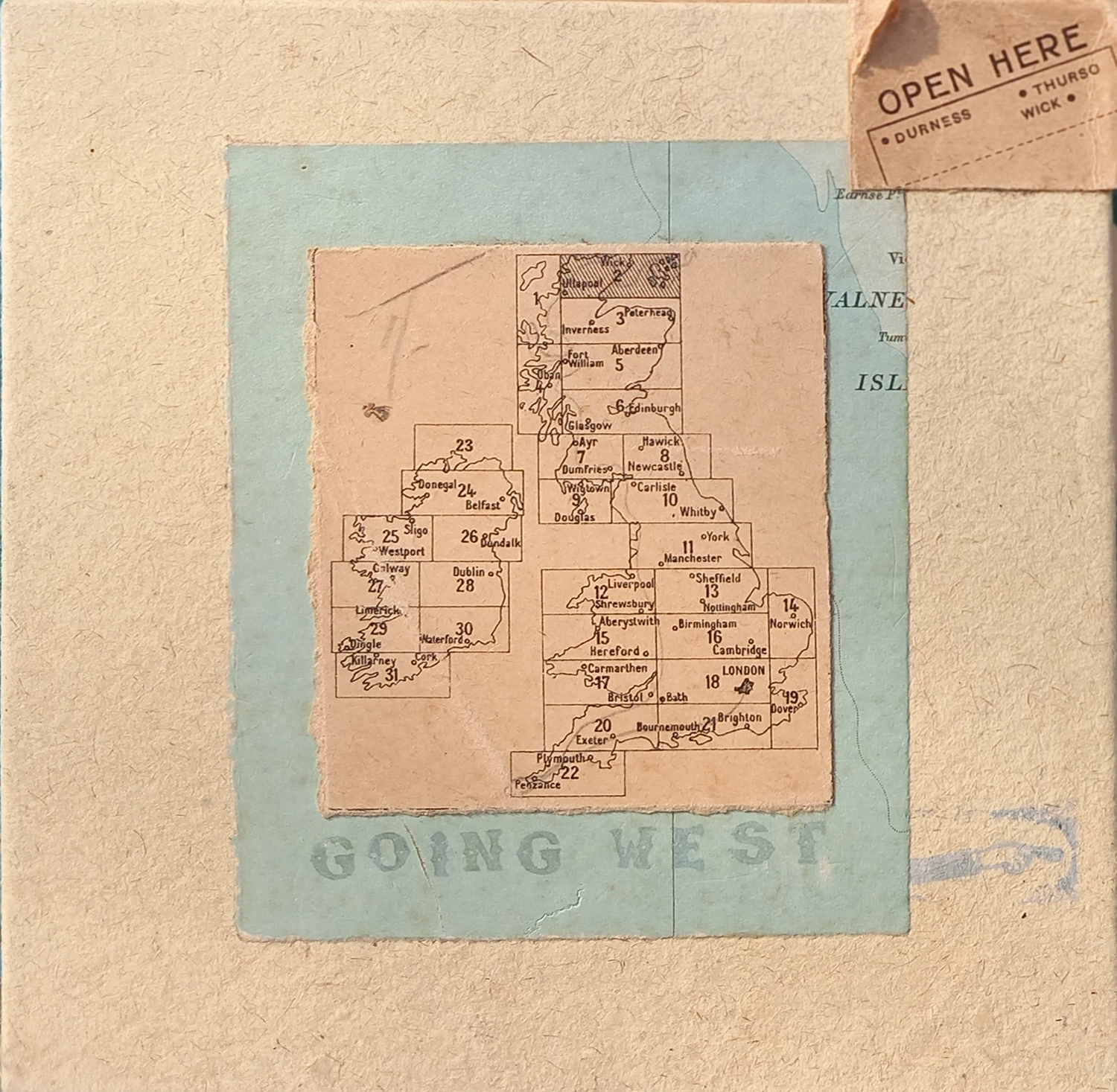
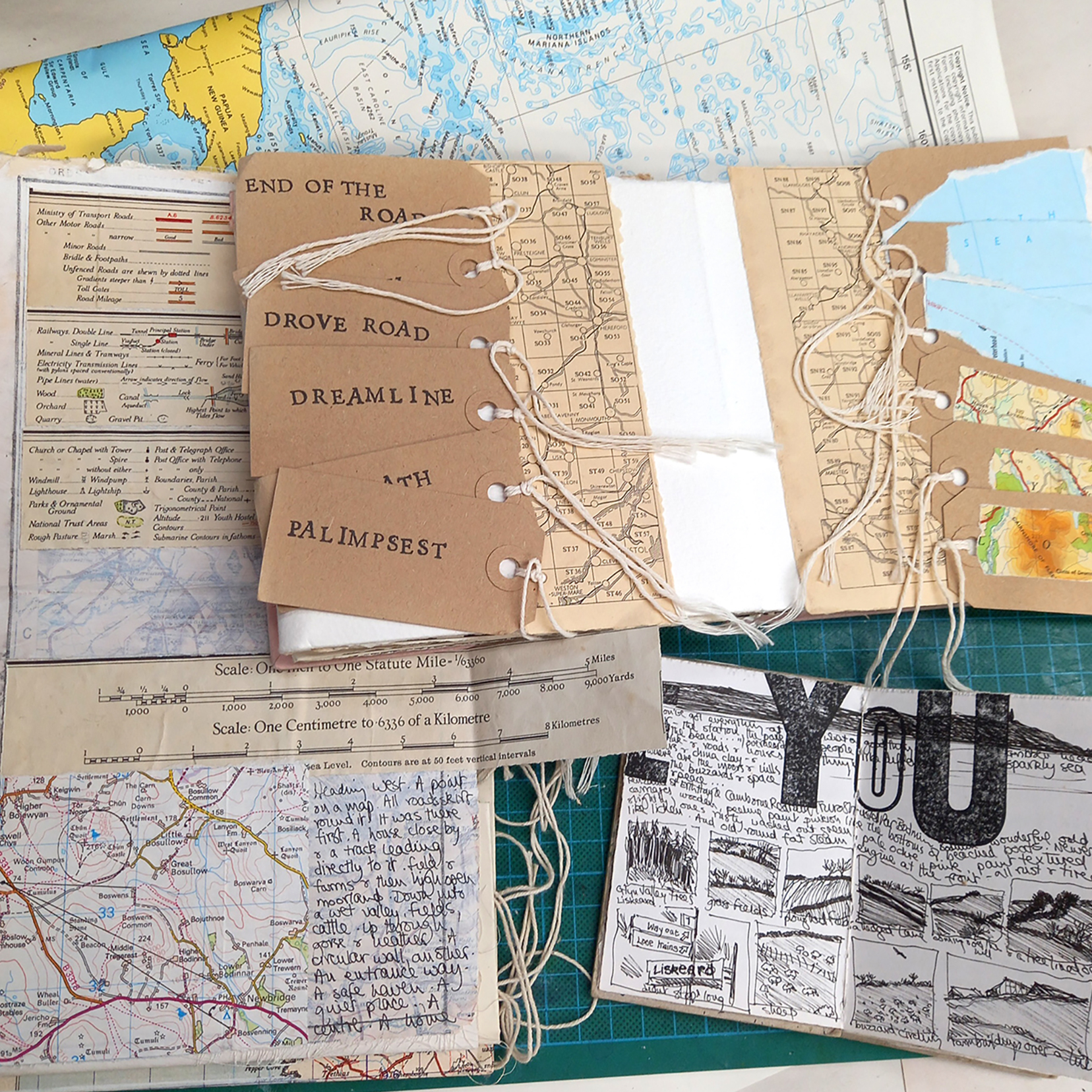
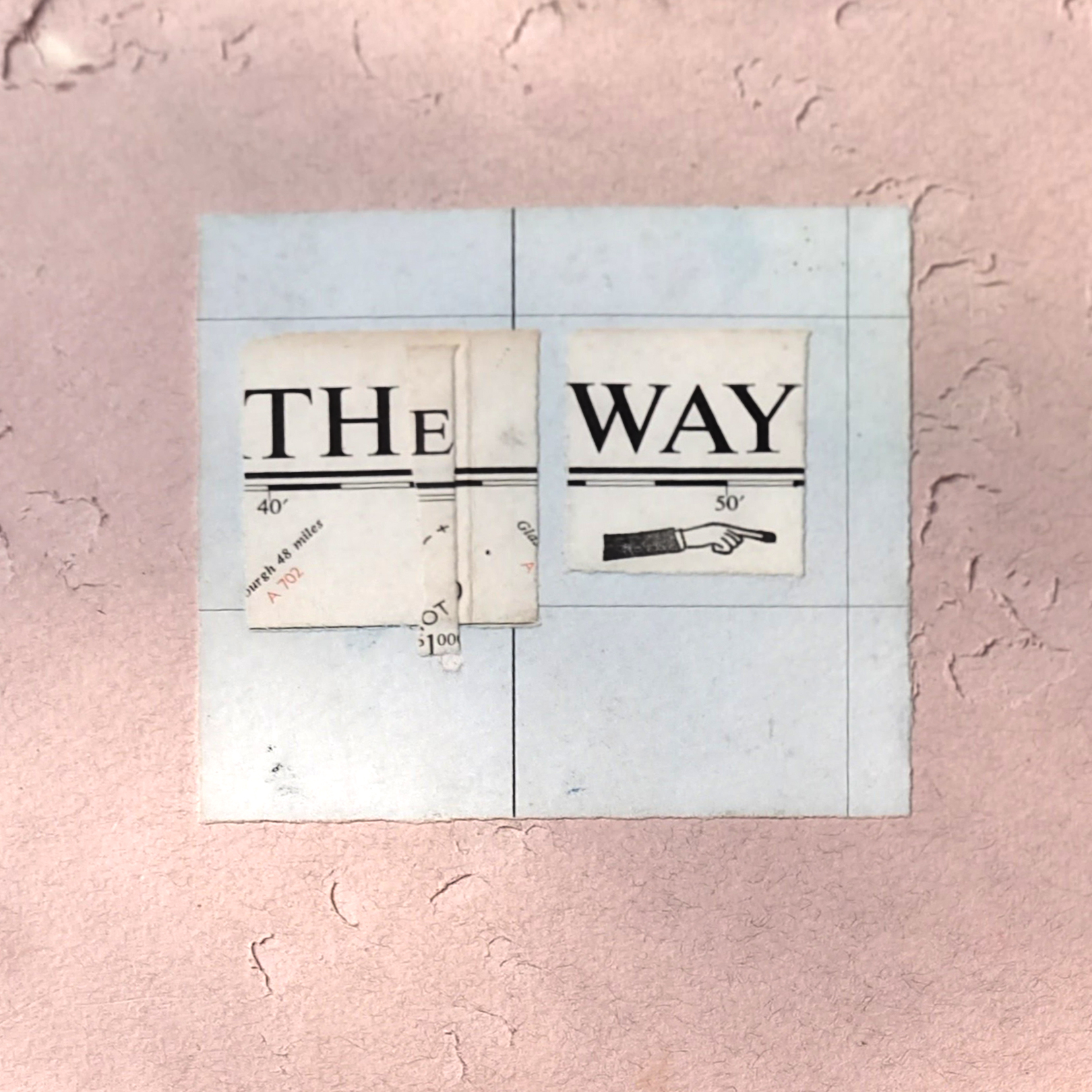
About Sue Lewington
After studying at Harrow School of Art in the 1960s, Sue first worked as a freelance illustrator. She moved to West Penwith in Cornwall in 1975, inspired by the wild and rugged land. She augmented her income as an artist by teaching printmaking at Penzance School of Art.
In 1989 she moved to St Martins on the Isles of Scilly, where she ran her own gallery. Here, she was surrounded by a completely different landscape from that of Cornwall; rocks, sand and sea, in its many moods. In 2006 she returned to live in West Penwith, working from a studio at her home and exhibiting in many galleries in the South West. Her ink and watercolour sketches of local scenes have great popular appeal. A great number of her journals and sketches have been published in book form and are widely available in bookshops and galleries throughout Cornwall and Devon. She says: ‘I want to record the experience of living on the edge of the land, whether in Scilly, Penwith, or my new-found love and inspiration, Shetland.’
Visit Sue’s website: https://www.suelewington.net/
